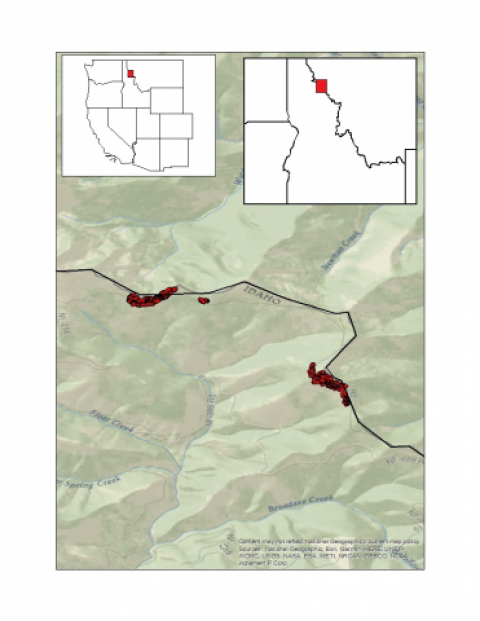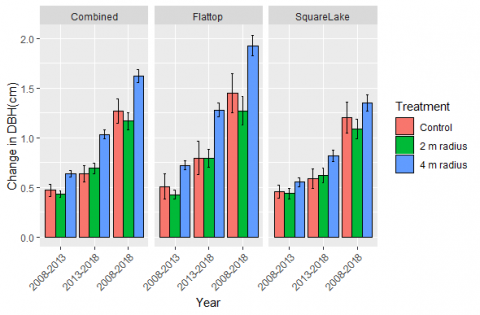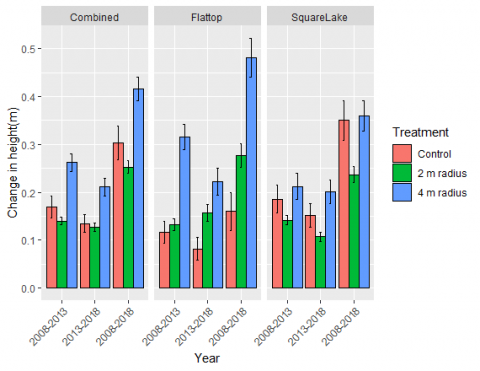Whitebark pine populations are declining across their entire range due to the combined effects of mountain pine beetle, whitebark pine blister rust, and changing fire regimes. This species is incredibly important for ecosystem diversity as well as snowpack and soil retention in the high elevation sites. Efforts are underway to restore whitebark pine forests using a wide variety of mechanical and prescribed burning techniques to reduce competition around living whitebark pine trees to improve tree vigor and promote regeneration. One experimental mechanical method, called “daylighting”, involves the removal of tree competition in a small circle around individual whitebark pine trees. In this study, we evaluated increases in diameter and height over ten years (2008-2018) after two types of daylighting treatments (removing competition in a 2 m and 4 m radius around selected trees) on two units along the Idaho-Montana, USA divide.
In 2008, 694 young whitebark pine trees, with a minimum height of 0.5 m and a maximum DBH of 10 cm and without visual sign of lethal blister rust cankers, were selected and tagged in two large areas on the Idaho Panhandle National Forest (IPNF) on the border of Idaho and Montana, USA. 287 of the whitebark pine were tagged and treated as control trees, while 407 more were assigned either a 2-meter or 4-meter thinned radius, separated equally within 3 height classes. After the 2008 release treatments, re-measurements were taken in 2013 and 2018 of DBH, height, live crown percentage, rust %, and live canopy % of all treated and control trees, and height increases, diameter increases, and rust presence examined.
- We found that while there were increases in diameter (average of 1.2 cm for 2 m radii and 1.6 for 4 m radii) and height growth (an average of 0.03 m for 2 m radii and 0.04 m for 4 m radii) over the 10 years, daylighting around trees using a 2 m radius resulted in no significant increases in either height or diameter growth for individual whitebark pine trees when compared to untreated controls.
- There were statistically significant differences in growth for trees in the 4 m radius treatment compared to the control, but these differences were small (an average of 0.05 cm for diameter; 0.001 m for height).
- While selected trees in 2008 had no blister rust cankers on their boles and branches with blister rust were pruned, we found a significant increase in blister rust presence from 2013 to 2018 (~56% increase). However, the increase in blister rust presence was similar across trees in both treated areas and controls.



